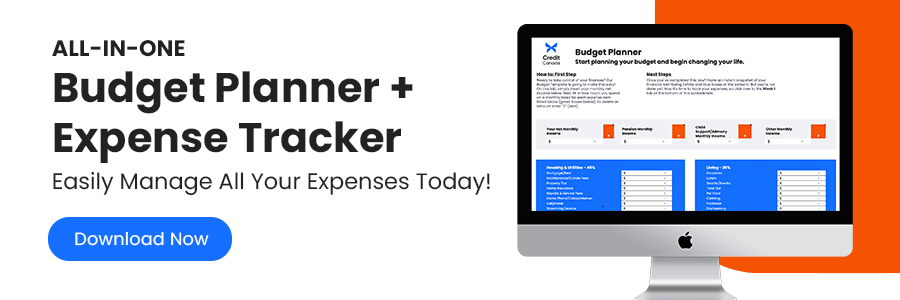
When some people hear the word "budget" or "spending plan" they immediately shut down, throw caution to the wind and think, "Yea, would be nice but I don't know where to start." So we've put together a spending plan cheat sheet, if you will, listing out 15 ways to organize your spending so you have your bases covered and a little spending cash for fun.
For those not financially inclined, creating a monthly budget can seem like a daunting task—but it doesn’t have to be! While you'll find some people suggesting standard budget categories like necessities and nice-to-haves, it can be too broad and not do you much good. So, we've taken budgeting a step further and broken it down into 15 spending categories to really help you get a grip on your finances.
In doing so, you'll be able to see where your money goes—and where you may be able to cut in order to pay down debt quicker or contribute to your personal savings faster.
Before we get to expenses, let’s talk about income. (After all, it's how you'll pay all these expenses!) You want to work with your net income or "take home pay" which is the amount of money you have left over after any and all deductions have been taken care of. Then, if you receive additional income on a regular basis—things like tips, side job income, tax refunds, child support, bonuses and/or expense reimbursements—you'll want to add those in. This total amount is your net income, and this is the total amount of money you have to work with to take care of ALL your expenses.
Now, onto the 15 spending categories!
1. Housing
Home is where the heart is. It’s also where we spend a lot of our money, so it’s important to keep track of expenses. Thankfully, many of these items require the same amount of money month to month, so it's a relatively easy category to keep track of.
|
|
2. Utilities/Hydro
“Lights out!” is a miserable experience. (It’s no fun getting into the shower and realizing the water has been shut off or losing your cable during the last five minutes of a great movie.) Make sure you're dedicating enough of your monthly net income to cover the expenses below, every single month.
|
|
3. Food
Whether you’re feeding yourself or a family of five, food costs can quickly add up (especially if you’re dining out or rolling through Tim Horton’s regularly). Some people might choose to leave these 'splurge' items out because they're not necessary expenses, but if you're spending the money they have to go into your budget. Remember, a budget isn't meant to make you feel guilty or ashamed, and it's not a goal of what your spending should look like either. It's a real account of the real spending that you do, so add every item you consume, guilt and judgement-free.
|
|
4. Transportation
By land or by sea, getting from point A to point B can be costly, especially depending on how far apart they are. Some costs associated with transportation could be daily, weekly, monthly, semi-annually or annually. Include them all in your budget. If you have a side hustle (aka a side job, like being an Uber or Lyft driver, making deliveries, or you do some type of contract work) making a note of all your transportation costs can be very helpful come tax time.
|
|
5. Medical
Whether it’s a yearly checkup, a temporary injury, or that dreaded winter flu, we have to take care of ourselves! But there are many other medical expenses that we might forget to include in our spending plans.
|
|
6. Insurance
Many of these could be wrapped into another category (and feel free to do so), but there are enough here that we thought it best to break it down into its own category.
|
|
7. Household Items
This is your “everything-but-the-kitchen-sink” category. Sure, items like light bulbs could fit in here, but trying to count for fairly inexpensive and infrequent purchases can be a waste of time. So, stick to regularly purchased items. And please feel free to add anything else you purchase on a regular basis but that's not on our list.
|
|
8. Personal
Another catch-all category that keeps you (and the family, if applicable) looking good are your personal grooming expenses. These are regular expenses, like haircuts and clothing, that contribute to the way we present ourselves to the world.
|
|
9. Entertainment
You know what they say, “all work and no play makes Jack a dull boy.” Everyone needs some “me money” or “fun money” so make sure to include it in your budget.
|
|
10. Child Care
Raising little ones can be costly—but well worth it. Thankfully, most expenses will decrease over time as your child gets older, but we all know teenagers aren’t above asking for a handout here and there, nor are adult-children.
|
|
11. Pet Care
Snowflake and Fluffy are members of the family too, so we’ve given them their own category.
|
|
12. Gifts
It’s easy to overlook this category, as gift-giving occasions don’t come up every day, but when they do your pocketbook can take quite the hit, so it's best to plan for them.
|
|
13. Education
This category may apply to yourself or your child. Either way, education costs can be expensive, especially at the start of each school year, so be sure to include them into your budget.
|
|
14. Savings
Hopefully, despite all the expenses listed above, you’ll also be able to squirrel away some savings for yourself and/or your family.
|
|
15. Debt
Last but certainly not least: Debt. If you want to put more money towards the categories you want, you have to start putting as much of your net income as you can towards your debt. That stops interest from piling up, and as your balances start to drop off you can begin allocating more money toward savings and "fun" categories.
|
|
You can learn more about different debt repayment strategies, like the avalanche and snowball methods, or check out our tips and tools page for our free budgeting tools, like our budget calculator, monthly budget tracker, debt calculator, and more. But if you've gone through this exercise and discover that your expenses far outweigh your net income—even if you cut back in certain areas—you may want to speak with one of our non-profit credit counsellors.
During a free consultation, which can be over the phone or in-person, they will review your debt, income and total monthly expenses then provide you with all your options to become debt-free, like our Debt Consolidation Program. The counselling session is 100% free, confidential and non-judgmental, so you will get all the information you need to make the best decision for you. Contact us today by calling 1.800.267.2272.

Frequently Asked Questions
Have a question? We are here to help.
What is a Debt Consolidation Program?
A Debt Consolidation Program (DCP) is an arrangement made between your creditors and a non-profit credit counselling agency. Working with a reputable, non-profit credit counselling agency means a certified Credit Counsellor will negotiate with your creditors on your behalf to drop the interest on your unsecured debts, while also rounding up all your unsecured debts into a single, lower monthly payment. In Canada’s provinces, such as Ontario, these debt payment programs lead to faster debt relief!
Can I enter a Debt Consolidation Program with bad credit?
Yes, you can sign up for a DCP even if you have bad credit. Your credit score will not impact your ability to get debt help through a DCP. Bad credit can, however, impact your ability to get a debt consolidation loan.
Do I have to give up my credit cards in a Debt Consolidation Program?
Will Debt Consolidation hurt my credit score?
Most people entering a DCP already have a low credit score. While a DCP could lower your credit score at first, in the long run, if you keep up with the program and make your monthly payments on time as agreed, your credit score will eventually improve.
Can you get out of a Debt Consolidation Program?
Anyone who signs up for a DCP must sign an agreement; however, it's completely voluntary and any time a client wants to leave the Program they can. Once a client has left the Program, they will have to deal with their creditors and collectors directly, and if their Counsellor negotiated interest relief and lower monthly payments, in most cases, these would no longer be an option for the client.







